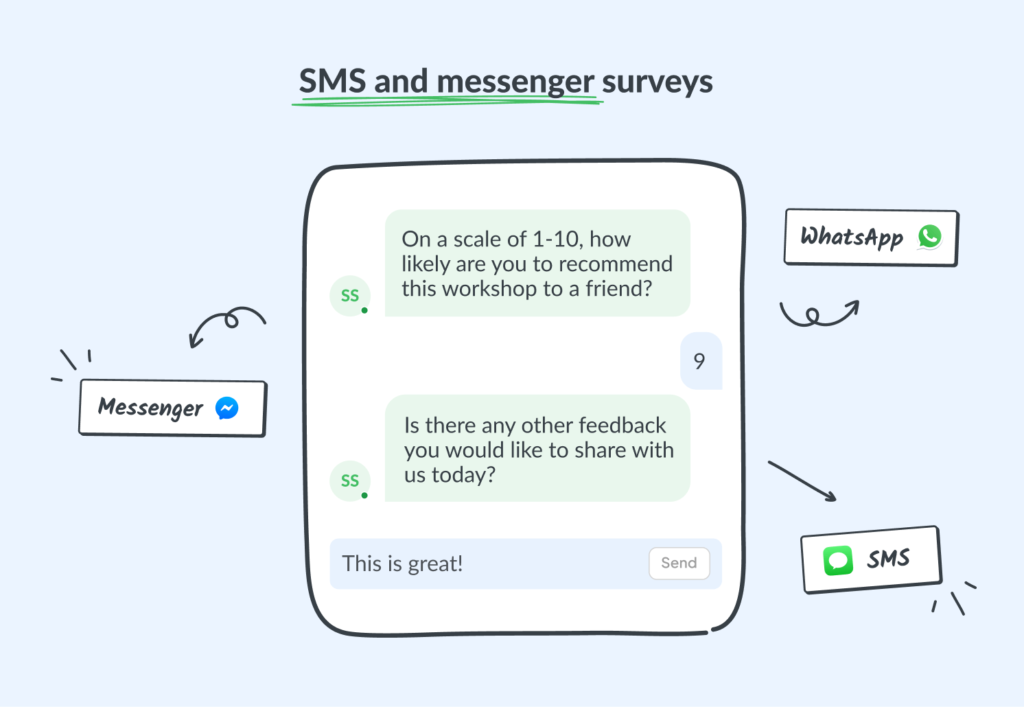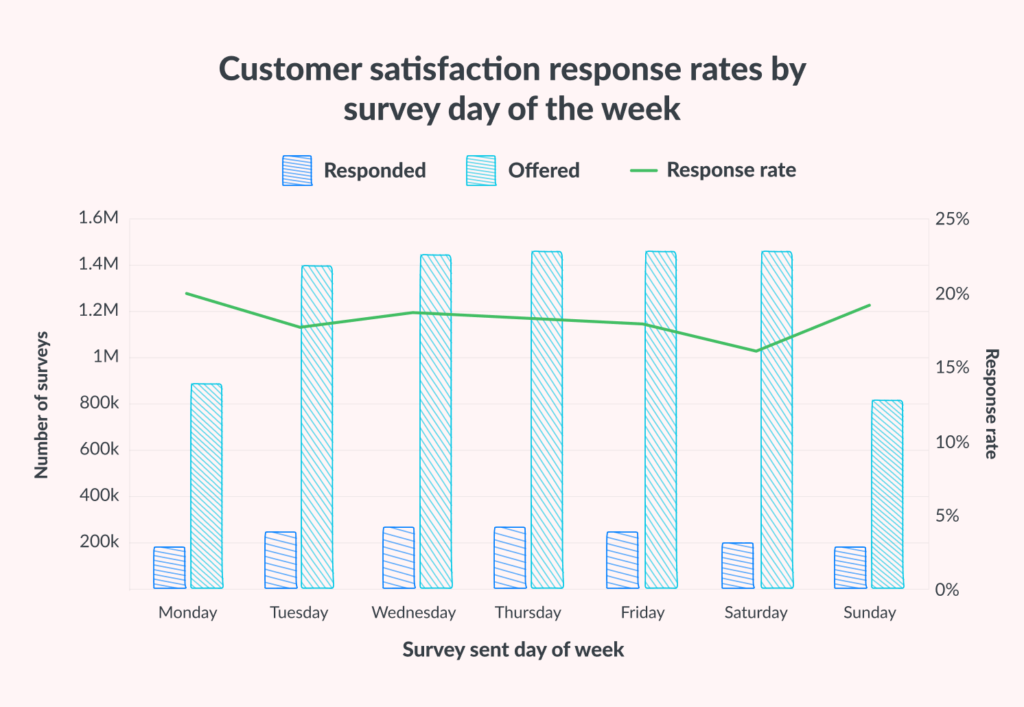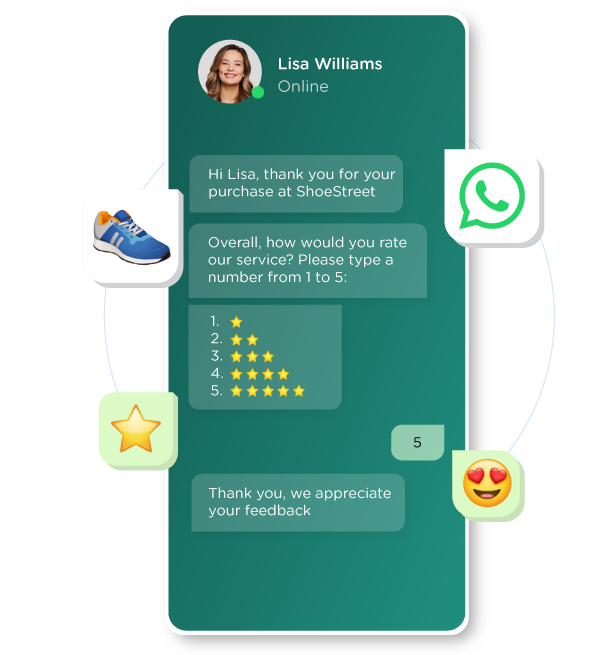In today’s fast-paced digital world, businesses are constantly seeking ways to stay connected with their customers. While social media, email, and other forms of communication have their place, SMS (Short Message Service) has proven to be one of the most effective ways to engage with customers in a direct, personal, and timely manner. With an open rate of around 98%, SMS offers an unparalleled opportunity to enhance customer engagement, foster loyalty, and drive conversions.
We explore best practices for using SMS in customer engagement and shares success stories of businesses that have effectively used SMS to build stronger connections with their customers.
Why SMS is Effective for Customer Engagement
SMS marketing has risen to prominence for a reason—people read their texts. Unlike emails that can end up in spam folders or go unnoticed, text messages are typically read within minutes of receipt. This makes SMS one of the most reliable methods to capture immediate attention and facilitate direct communication with customers.
Moreover, SMS offers several unique advantages:
- High Open Rate: SMS messages boast a 98% open rate, making it an ideal channel to ensure your message reaches the intended audience.
- Direct Communication: SMS allows businesses to send personalized messages directly to the mobile devices of their customers, creating a more intimate communication channel.
- Immediate Impact: The immediacy of SMS makes it perfect for time-sensitive promotions, updates, reminders, or personalized offers.
- Short and Simple: SMS messages are concise, which forces brands to communicate effectively and efficiently, delivering value in just a few words.
Best Practices for Using SMS in Customer Engagement
While SMS is an effective tool, businesses must use it strategically to ensure maximum engagement and customer satisfaction. Below are some of the best practices to consider:
1. Obtain Consent and Be Transparent
Before sending any SMS, it is crucial to obtain explicit consent from your customers. Opt-in mechanisms—such as checkboxes during online sign-ups, SMS keyword campaigns, or promotional offers requiring a phone number—are essential for compliance and customer trust. It’s also important to be transparent about what kind of messages they will receive, including frequency and type of content.
2. Personalize Your Messages
Personalization is key to ensuring your SMS marketing feels relevant and tailored to each customer. Use customer data to customize messages, such as including their first name, product preferences, or location. Personalized texts are more likely to drive customer engagement because they create a sense of value and consideration.
For example, a retail brand might send personalized SMS messages about a customer’s favorite products, offering them a discount on their next purchase.
3. Provide Clear Calls to Action (CTAs)
The best SMS messages are action-driven. Each message should have a clear call to action (CTA) that tells customers exactly what to do next. Whether it’s to make a purchase, sign up for a service, or take advantage of a limited-time offer, CTAs should be easy to follow and result in quick actions.
For instance, “Reply with ‘YES’ to get 20% off your next order!” or “Click here to claim your exclusive deal before it expires!”
4. Timing is Everything
SMS messages should be sent at the right time to maximize engagement. Sending messages too early in the morning or late at night can annoy customers and result in unsubscribes. Conversely, sending messages during peak times—such as lunchtime, early evening, or around special occasions like holidays—can ensure your SMS campaigns are seen and acted upon.
Use tools that allow for SMS scheduling to send messages at the most effective times based on your audience’s behavior.
5. Keep It Short and Sweet
SMS is inherently limited to 160 characters, so it’s important to keep your messages clear and concise. Avoid long-winded content and get to the point quickly. Shorter messages also allow your customers to engage quickly and without confusion.
Instead of “We wanted to let you know about our brand-new collection of shoes that are available for purchase now,” try “New shoes are in! 20% off. Shop now.”
6. Offer Value and Incentives
Customers are more likely to engage with SMS messages if they see the value. Offering exclusive discounts, early access to sales, or loyalty rewards are great incentives that encourage customers to take immediate action. A well-timed offer can drive traffic to your website or physical store and increase conversions.
Success Stories of Businesses Leveraging SMS for Customer Engagement
Let’s take a look at a few companies that have successfully leveraged SMS to engage their customers and drive business growth:
1. Starbucks: Rewarding Loyalty with SMS
Starbucks is a prime example of a brand that has successfully integrated SMS into its customer engagement strategy. Through their Starbucks Rewards Program, customers opt-in to receive SMS messages about exclusive offers, new products, and personalized rewards.
By using SMS to inform customers about free drink offers or birthday rewards, Starbucks has created a highly engaged customer base that feels valued and incentivized to keep returning. This level of personalized engagement drives sales and strengthens customer loyalty.
2. Domino’s: SMS for Order Updates
Domino’s has used SMS to enhance its customer experience by providing real-time order updates. Customers who place an order through Domino’s can choose to receive SMS alerts notifying them of their pizza’s progress—from order confirmation to being “out for delivery.”
This level of transparency and convenience not only improves the customer experience but also reduces calls to the customer service team, freeing up resources while increasing customer satisfaction.
3. T-Mobile: Engaging Customers with Special Offers
T-Mobile uses SMS to send personalized promotions, reminders, and exclusive offers to its customers. For example, T-Mobile frequently sends SMS messages to customers about upcoming deals on phone plans or add-ons that align with their usage patterns.
Through T-Mobile Tuesdays, the company offers its customers weekly promotions and discounts. The SMS reminders ensure that customers don’t miss out on these exclusive benefits, and the personalized nature of the offers increases customer engagement and loyalty.
4. Amazon: SMS for Order and Delivery Notifications
Amazon has made excellent use of SMS to engage with its customers. SMS notifications are sent for order confirmations, shipping updates, and delivery tracking, allowing customers to stay informed and plan their schedule accordingly.
By integrating SMS into its order tracking process, Amazon provides a seamless experience that keeps customers engaged, happy, and coming back for more.
Segment Your Audience for Targeted SMS Campaigns
Effective SMS marketing isn’t a one-size-fits-all approach. It’s crucial to segment your audience based on factors like purchase history, location, or browsing behavior. By doing so, you can send highly targeted messages that speak directly to a customer’s specific needs or interests.
For example, an online fashion retailer could segment its audience by clothing preferences, such as casual wear vs. formal wear, and send SMS promotions tailored to each group. Alternatively, local businesses can segment customers by geographic location and send SMS notifications about nearby sales or events.
Targeted campaigns ensure that your messages are relevant and timely, which can lead to higher engagement rates and fewer unsubscribes.

Combine SMS with Other Marketing Channels for a Unified Experience
While SMS is a powerful tool on its own, its effectiveness can be significantly enhanced when integrated with other marketing channels. Combining SMS with email marketing, social media, push notifications, and in-app messages can create a seamless and cohesive experience for customers.
For instance, a customer might receive an SMS reminder about a special offer, followed by an email with more details, and a social media post reinforcing the promotion. This multi-channel approach ensures that your message reaches customers where they are, increasing the chances of engagement.
Ensure that your SMS campaigns are well-coordinated with other channels so that the messaging is consistent and aligns with the overall brand voice.
Use SMS to Drive Customer Feedback and Surveys
SMS is also a fantastic tool for collecting feedback from customers. Sending quick surveys or asking for ratings can provide valuable insights into customer satisfaction and help you refine your engagement strategies.
Keep the surveys short and straightforward, with clear instructions on how customers can participate. For example, “Tell us how we did! Reply with a 1-5 rating for your recent purchase, or type ‘HELP’ for assistance.” Offering a small incentive, like a discount on their next purchase, can encourage participation and increase response rates.
Customer feedback gathered through SMS can inform future product development, improve customer service, and ultimately enhance the overall customer experience.
Be Mindful of Frequency: Avoid SMS Fatigue
One of the most important considerations when implementing an SMS strategy is not to overwhelm customers with too many messages. Bombarding customers with frequent texts can lead to SMS fatigue and an increase in unsubscribes.
It’s important to find a balance in the frequency of your messages. Too few messages might lead to a lack of engagement, while too many can be perceived as spam. Aim for a frequency that feels personal and useful without being intrusive—typically, one to two SMS messages per week is a good starting point.
Also, always give customers the option to opt-out or modify their communication preferences. Providing an easy way to unsubscribe ensures that your messages reach only those who genuinely want to receive them.
SMS CampaignsAutomate for Efficiency
One of the greatest advantages of SMS marketing is the ability to automate campaigns. Automation saves time, increases consistency, and ensures that customers receive the right message at the right time.
For example, automated SMS messages can be triggered by specific actions such as:
- Abandoned cart reminders: A message like, “You left something behind! Complete your purchase now and get 10% off.”
- Post-purchase follow-ups: “Thank you for your order! Here’s a 15% off coupon for your next purchase.”
- Birthday greetings: “Happy Birthday! Enjoy 20% off your next order to celebrate.”
SMS automation platforms allow you to schedule, segment, and personalize messages, making it easier to engage with customers while saving valuable time and resources.

Stay Compliant with SMS Marketing Regulations
As SMS marketing grows, so do the rules and regulations that govern its use. Adhering to these laws is critical to maintaining your brand’s reputation and avoiding legal issues. Compliance ensures that you respect customers’ privacy and provide them with control over the messages they receive.
Some key regulations to keep in mind:
- The Telephone Consumer Protection Act (TCPA): This U.S. law requires businesses to obtain prior express written consent before sending marketing SMS to customers.
- General Data Protection Regulation (GDPR): For businesses targeting customers in the European Union, GDPR mandates that businesses protect customer data and obtain explicit consent before sending SMS messages.
- CAN-SPAM Act: This applies to email but can also be relevant for SMS marketing when sending transactional or promotional messages.
To stay compliant, make sure to include a clear opt-in process, respect opt-out requests, and avoid sending messages to customers who haven’t agreed to receive them.
Analyze SMS Campaign Performance for Continuous Improvement
To maximize the impact of your SMS marketing efforts, it’s essential to track and analyze campaign performance. SMS analytics can provide valuable insights into open rates, click-through rates (CTR), conversion rates, and customer responses.
By monitoring these metrics, businesses can determine what’s working and what’s not. For instance, if one type of message leads to more conversions, you can focus on that format in future campaigns.
A/B testing is another useful tool for optimizing SMS campaigns. Experiment with different messaging strategies, CTAs, and times of day to determine which approach works best for your audience.
Continuous analysis and refinement of your SMS campaigns can help increase their effectiveness and deliver higher ROI over time.

Overcoming Challenges in SMS Marketing
Like any marketing channel, SMS marketing presents certain challenges. These might include:
- Maintaining relevance: With so many businesses using SMS, standing out can be difficult. To overcome this, focus on providing value in every message and ensure that your content is tailored to your audience’s interests.
- Avoiding opt-outs: If your messages become too frequent or irrelevant, you risk losing subscribers. Keep the content valuable and respectful of customers’ time.
- Technical issues: Sending SMS messages at scale can present technical challenges. Ensure that your platform is reliable and capable of handling large volumes of messages.
Despite these challenges, SMS marketing remains one of the most powerful and efficient methods for customer engagement when executed thoughtfully.
The Future of SMS for Customer Engagement
As the demand for instant gratification and real-time communication continues to rise, SMS will remain a crucial tool for customer engagement. Looking to the future, businesses will increasingly use SMS alongside other marketing channels like email, social media, and push notifications to create a multi-channel customer engagement strategy.
With advancements in automation, AI-driven SMS, and personalized messaging, the potential for SMS in customer engagement will continue to expand. In the coming years, expect to see more interactive SMS campaigns, where customers can respond directly to messages and participate in surveys, polls, or loyalty programs.
SMS as a Powerful Customer Engagement Tool
As we’ve seen throughout this article, SMS marketing provides businesses with a direct, personal, and immediate way to engage with customers. By following best practices—such as segmenting your audience, offering value, and ensuring compliance—SMS can play a pivotal role in building stronger relationships with customers.
The future of SMS is bright, with automation, AI-driven personalization, and multi-channel integration paving the way for more innovative and effective customer engagement strategies.
Businesses that master the art of SMS marketing will not only drive higher conversion rates but also build lasting customer loyalty, ultimately setting themselves apart in an increasingly competitive market.
